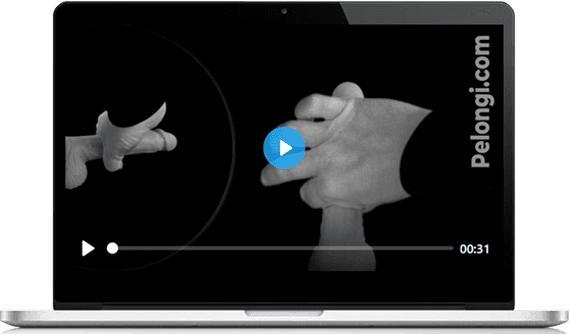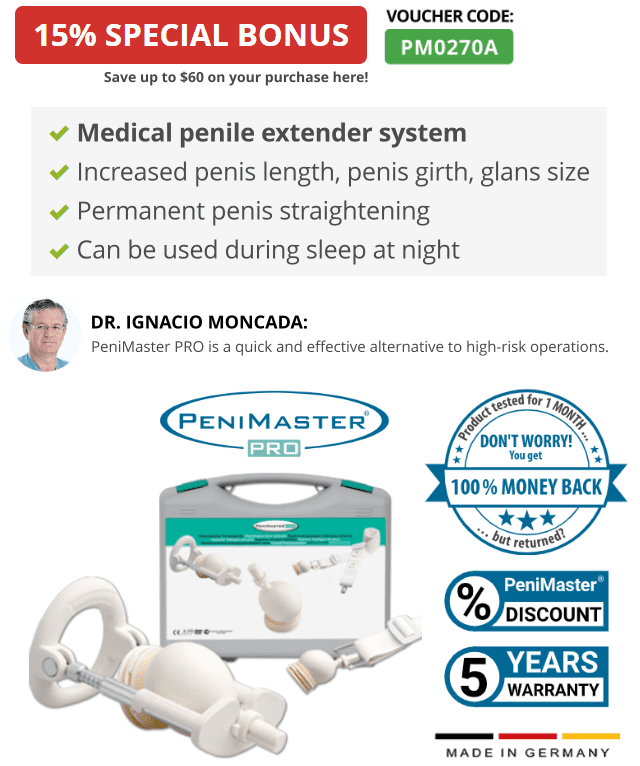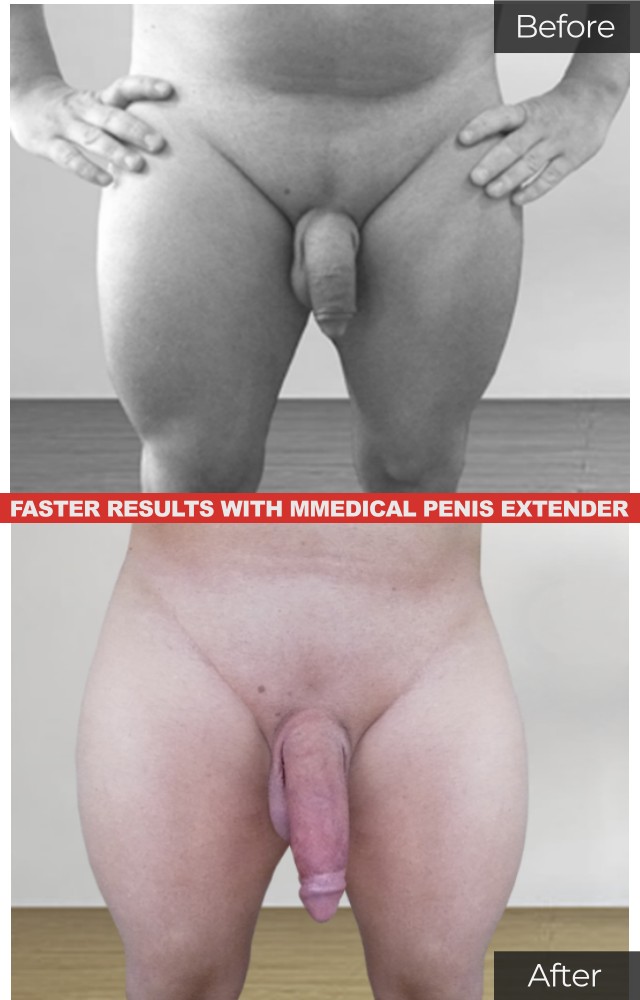Bend penis girth exercise
Results
- • Increase penis girth
Instruction
- • for Advanced users
Workout Time
- • 3 minutes daily
Exercise
The Bend exercise is mainly used to peyronie's disease treatment, but also increases the penis girth. In this penis enlargement exercise the erect shaft is bent to the right and left. Regular use of this bending technique for several months will lead to a long-term correction of penile curvature.
- Alternative name:
- none
- Anatomical focus:
- Erectile tissue (Correction)
- Glans penis
- Supported measured values:
- none
- Practice family:
- Curved penis treatment
- Related exercises:
- Slinky Bend (Experts)
- This penis enlargement exercise mainly targets penis girth and increases:
- erect glans size
- erect penis girth
- flaccid glans size
- flaccid penis girth
- penis straightening
Tutorial
penis girth exerciseBring penis to the suggested erection level.
Create with your right hand an OK-grip around the base of the penis. Place the grip as close to the pubic bone as possible.
Create with your left hand an OK-grip and place the grip directly behind the glans.
Bend the penis slowly and carefully to the right until a comfortable bend limit is reached without pain or discomfort. Hold the position for the suggested rep time.
Change hands and and bend the penis slowly and carefully to the left until a comfortable bend limit is reached without pain or discomfort. Hold the position for the suggested rep time.
Change hands and repeat from step 4 for the suggested number of reps.
Video
Background
The term Bends is basically a very broad generic term for all grip techniques that bend the erect shaft in a certain direction. This can be done in a static frame, which is more reminiscent of grips for staunching blood, or it can be connected with a constant movement, which is more similar to jelqing (sometimes the terms vertical jelq or side jelq are used for this type of technique, see also the chapter Additional Information). In most cases, Bends are used specifically to correct an existing penis curvature (also called "deviation"). However, it should be noted that this procedure involves a risk that should not be underestimated, as the bulging erectile tissue is bent against its natural shape by external pressure. It is therefore all the more important not to perform this exercise lightly or with too much pressure. Rather, before using the bends, you should have gained enough experience with the regular PE exercises and know the limits of your own penis's ability to bear weight. Even then, patience (over many months) and a steady but careful execution of the exercise is the key to a successful curvature correction - not the most powerful bending of the penis. Aside from using the Bends to correct penile curvature, it is rarely used as an erectile tissue exercise to increase penis girth. For this purpose, however, there are far more unerring and less risky exercises (e.g. the Erect Squeeze or Uli Squeeze), which is why the use of bends for this purpose is rather unusual.
Workout
Bends are always performed with an erect penis, as only then is it possible to influence the shape of the erectile tissue in a targeted manner. At the same time, the prevailing erection also increases the risk of injury when performing the exercise. It is therefore essential to be careful to exert pressure on the erect shaft only very gently, carefully and patiently.
Additional Information
The following notes treat common questions regarding this exercise and provide further explanations of its fine-tuning and possible modifications.
- Thorough preparation and medical supervision:
-
Every user who suffers from a peyronie's disease and would like to try to correct it by means of PE exercises is strongly advised to first present his problem to a doctor and obtain further information. It is also important to obtain comprehensive information about deviations in general (also from your own urologist) so that you are aware of the risks of self-treatment and also know what the various forms and reasons for such a deformation can be. PE exercises are not always useful for correcting this, especially if the penile curvature is due to illness.
- Intensity regulation:
-
The intensity regulation of classic Bends is controlled solely by the pressure against the erect erectile tissue. Here it should be emphasized once again that one should start with very little pressure and only approach the desired degree of counter-curvature very carefully. The Bends achieve their success over very long, well-dosed stages. On the other hand, it is not possible and even extremely dangerous to suddenly (i.e. within a few weeks) press the cavernous bodies into the desired shape.
- Side Jelq and Vertical Jelq:
-
Side Jelq and Vertical Jelq are jelqing exercises that not only push blood through the penis into the frontal areas of the penis, but also work with a curvature of the erectile tissue (hence Bend-Jelqing). The Vertical Jelq works with a bend up or down, the Side Jelq is the equivalent for the right and left side. Both are performed in the same way as a mid-EQ jelq, but then supplemented by a bend in the respective direction (i.e. against the prevailing curvature of the penis). However, the intensity of these Bend Jelqs should be explored very carefully in order to keep the risk of injury as low as possible. Furthermore, it is very important not to perform this type of jelqs with a too strong erection (because especially then there is a risk of injury due to the strong opposite curvature).
- Previous exercise
- All Exercises
- Next exercise
- Clamping






